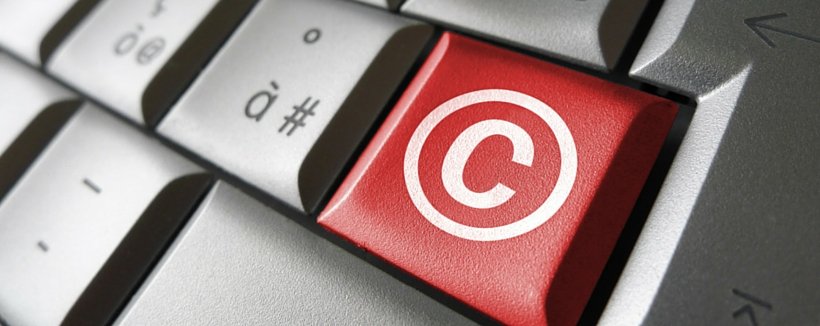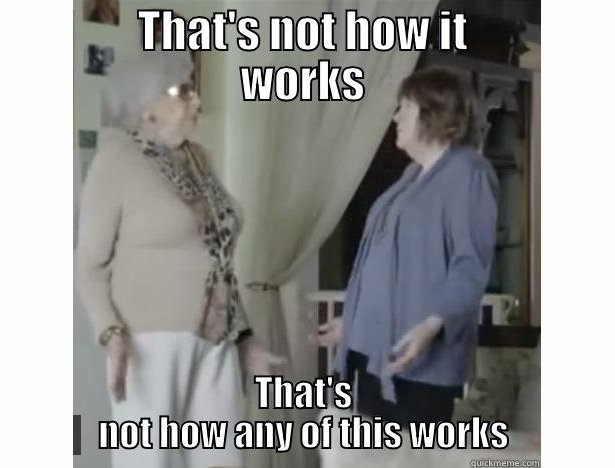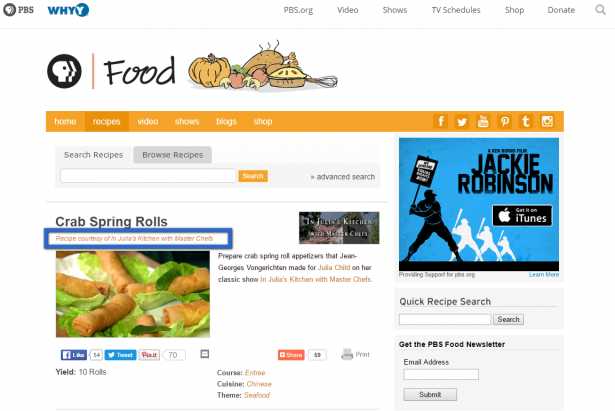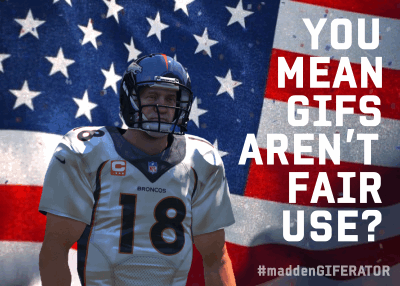
Every day you’re inundated by images. They appear in tweets, texts, and articles. You’ve probably laughed, liked, and shared countless ones. But have you ever wondered where the original image came from? More importantly, is that person even getting proper credit?
For content, it’s common knowledge that if you quote another person’s work, you better have permission — and at the very least, cite the source. Otherwise you’re infringing on copyright laws, which can have costly consequences.
But when it comes to images in content, it gets a little more complicated. For many, they think if it’s on the internet, it’s fair game. But that’s not how it works (that’s not how any of this works).

Source: S.quickmeme.com
Most people think by adding a couple words, they’ve created an original meme, or by adding a different filter, they’ve created an original JPEG. Wrong. The harsh reality is that’s not always the case. The “text” or “filter” might be “original,” but the image isn’t.
Being unaware of copyright rules for images not only will leave you in hot water, they’ll put a dent in your wallet, too. Before you share, make sure you’re familiar with the following:
1. Digital Millennium Copyright Act
In 1998, Congress implemented the Digital Millennium Copyright Act. Like the Copyright Act, DMCA offers protection to content such as ebooks, photographs, websites, music, even databases.
Under DMCA, you must request permission from the copyright holder or their agent to do any of the following:
- Scan a photograph.
- Use an image from a website.
- Post an image to a website.
- Forward an email with an image in the body or as an attachment.
For example, PBS.org has a food blog that includes recipes from “In Julia’s Kitchen with Master Chefs.” Note PBS provides proper attribution for the recipe, citing both “Julia’s Kitchen with Master Chefs” and Georges Vongerichten who made the dish for Julia Child.
Source: PBS.org
However, just because PBS provides credit for the recipe, it doesn’t leave them off the hook for the image. What’s interesting here is there’s no attribution for the photo. So what’s the deal? It could be their own image, but it’s also quite possible they’re using a stock photo.
Using a stock photo site for images isn’t an uncommon practice. And there are plenty of sites out there that offer free and legal images for your blogs and websites. With a paid subscription, oftentimes, you can use the photos without including attribution (e.g. Thinkstock). But always err on the side of caution and double-check for potential stipulations.
Now what would have happened if the image was originally taken by Julia Child? In an ideal world, we would email her, get permission, and be on our merry way. But she’s deceased. Uh-oh. In this case, you would defer to the Copyright Clearance Center. Oftentimes they can grant instant authorization. This is also helpful for when you’re not sure where the image originated.
2. Fair Use
Sometimes your image may fall under Fair Use, which means you don’t have to ask for permission. Typically, anything that is considered criticism, commentary, educational, or news-related will qualify.
Here are four factors to determine if your image falls within the realm of Fair Use:
- Purpose. Images that are noncommercial and nonprofit educational are fair game. And if you plan to transform the image (e.g. transformative use), even better. By adding something new, you’re usually in the clear.
- Originality. Authors of unpublished and more creative works tend to be off-limits. Steer clear of using their images.
- Amount. How much of the copyrighted material you plan to use will determine if it’s considered Fair Use. The more you use, the less it will be fair. For instance, let’s say you plan to create a GIF featuring 95 out of 100 movie scenes. Here, you’re going to need permission.
- Value. If unregulated use could potentially harm the market for the original, expect to be denied Fair Use.
Typically GIFs/memes fall within the realm of Fair Use because they’re either educational or only use a snippet of the original, like this GIF of Smucker’s Uncrustables. It’s both educational and only a portion of the original video.
Source: BuzzFeed
Where Fair Use gets murky is when you use other people’s photographs because it’s 100% of the original unlike a five-second clip from a TV show. There’s also the issue of devaluing the image, which happens when an image is used for less than savory reasons. After all, you might not want your creatives to be used in support of drug use. In scenarios like these, it’s best to stick to copyright rules, not Fair Use.
What Happens When You Violate Fair Use
So what happens when you use a GIF that isn’t Fair Use compliant? Sometimes you get kicked off of Twitter like Deadspin and SB Nation did.
Using NFL footage, the two created GIFs or Vines and posted them on Twitter. But the NFL wasn’t feeling the GIFs, and called foul, claiming the two media companies crossed the line from Fair Use into copyright infringement.
Source: Neimanlab.org
Technically according to Fair Use, Deadspin and SB Nation transformed the original footage. But in the eyes of the NFL, they didn’t change it enough. Fair Use is largely open to interpretation. And depending on how strict someone wants to be, it can be hard to assert Fair Use rights.
If you don’t feel like battling, play it safe and stick to Creative Commons (remember to include attribution) or use a stock photo site.
3. Social Media Sharing Rules
Sharing images on social media is a tricky one, and Facebook actually has a whole section devoted to Copyright FAQ under their Help Center. Here are some responses you’ll want to pay attention to:
- Always Get Permission. When in doubt (or unable to get permission) — don’t post. And if you’ve already posted, remove it promptly.
- Remember You Don’t Own that Film. Just because you recorded something (concert, show, sporting event) doesn’t make it your own (e.g. Deadspin and SB Nation NFL GIF). Always get permission before posting.
- A Photo of You Doesn’t Equal Ownership. Did your friend take a picture of you and later turn it into a meme? If someone takes a photo of you, and you don’t like it, tough luck. You don’t own it — the photographer does.
Meanwhile Instagram’s sharing rules defer to standard copyright laws as outlined under their Basic Terms and Rights section. And for Twitter, make sure that if you decide to republish another Twitter user’s photos, you use Twitter’s embed tool.
Fair Use
With regards to Fair Use, when you choose to share your own original Facebook content/images (e.g. selfies, quotes, pics of food, etc.) publicly on a platform like Facebook, Fair Use becomes fuzzy. Since it’s considered public, that falls under Fair Use should another person on and/or outside of Facebook decide to use your image, which they can without repercussions. However, if your privacy settings are set to private, and someone uses your image, then they’re violating copyright laws.
So, if you’re looking for images to share (or use) without a care in the world, public images on Facebook are a great source. Just remember posting images publicly can potentially relinquish your copyright privileges. So don’t post anything that you wouldn’t want to lose the rights to.
4. Getty Image Rules
Remember: the problem isn’t the meme itself, but the image. German Blogger — Geeksisters — knows this all too well. They used the meme “Socially Awkward Penguin” on their site and ended up receiving a letter from Getty Images demanding payment.
The penguin used is actually a National Geographic photo taken by photographer George F. Mobley and available for licensing on Getty.
Here, this case was particularly expensive, costing Geeksisters $785.40 in back license fees. Infringers are responsible for paying the copyrighter’s lost profits and licensing fee, which are not as high as what Getty demands. Getty usually ups the ante and includes their legal court fees, inflating the price. In fact, Getty demand letters are often referred to as “extortion letters.”
So lesson to be learned: if Geeksisters had just asked permission from Getty, the whole expensive episode could have been avoided.
Don’t let copyright rules suck the fun out of using images in your content. Stay compliant, and simply avoid trouble in the first place. Know your DMCA and Fair Use rules, and when in doubt, avoid using the Socially Awkward Penguin.
Read more:


